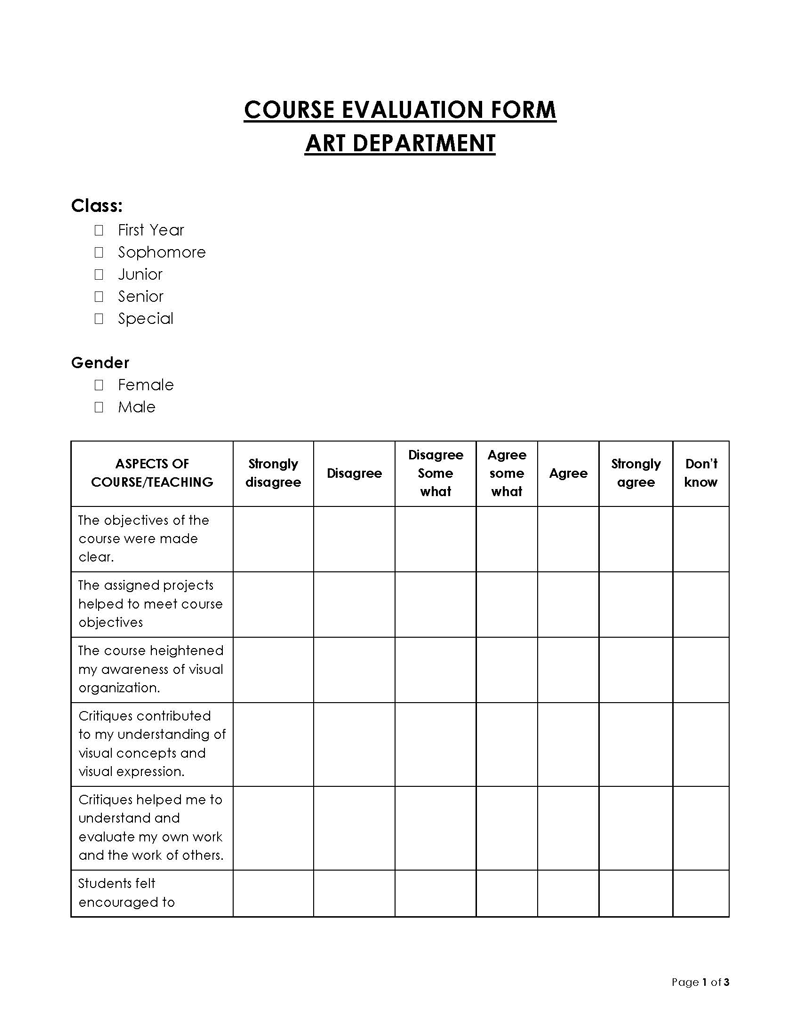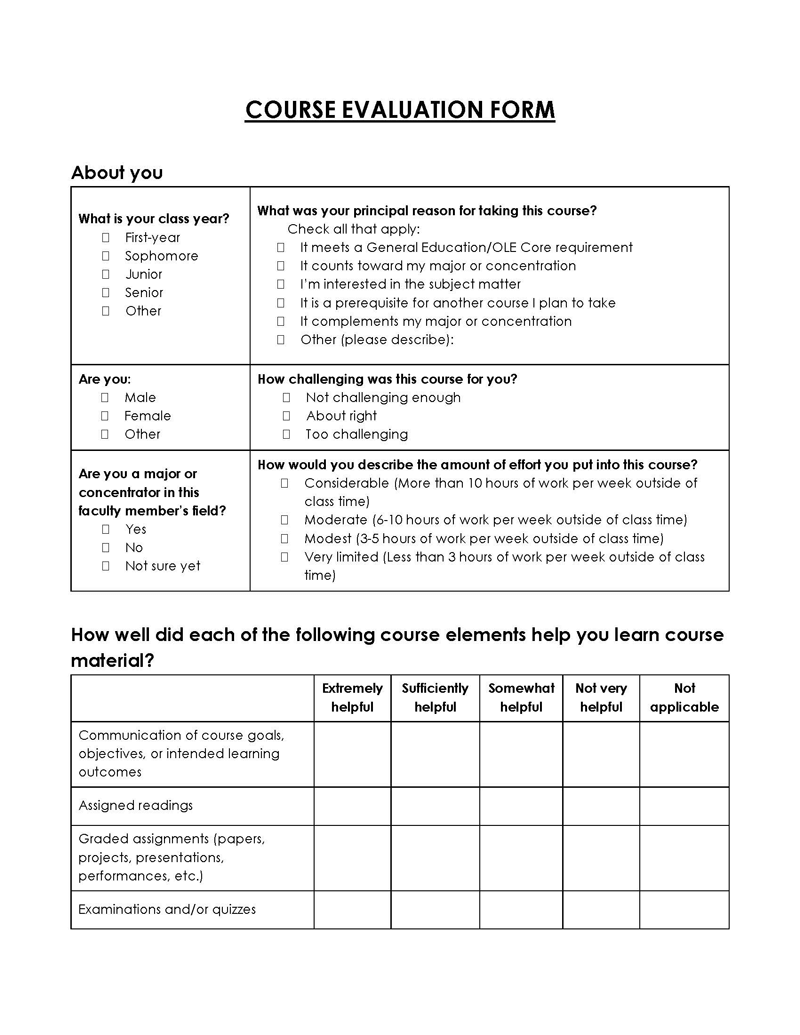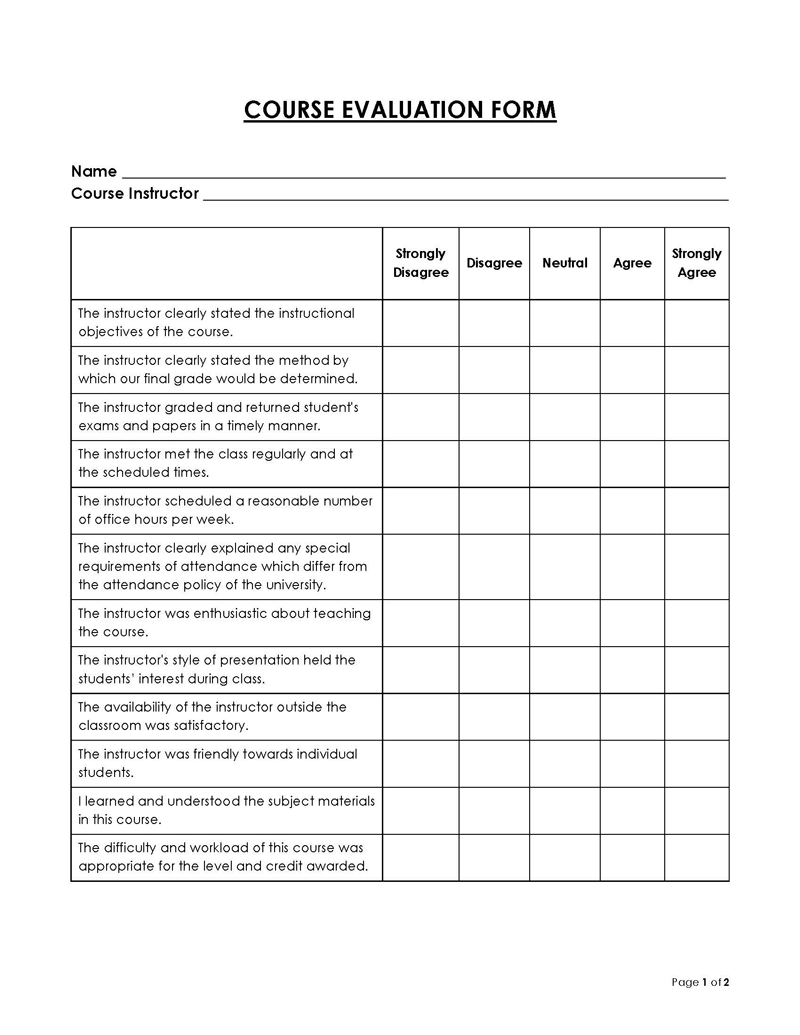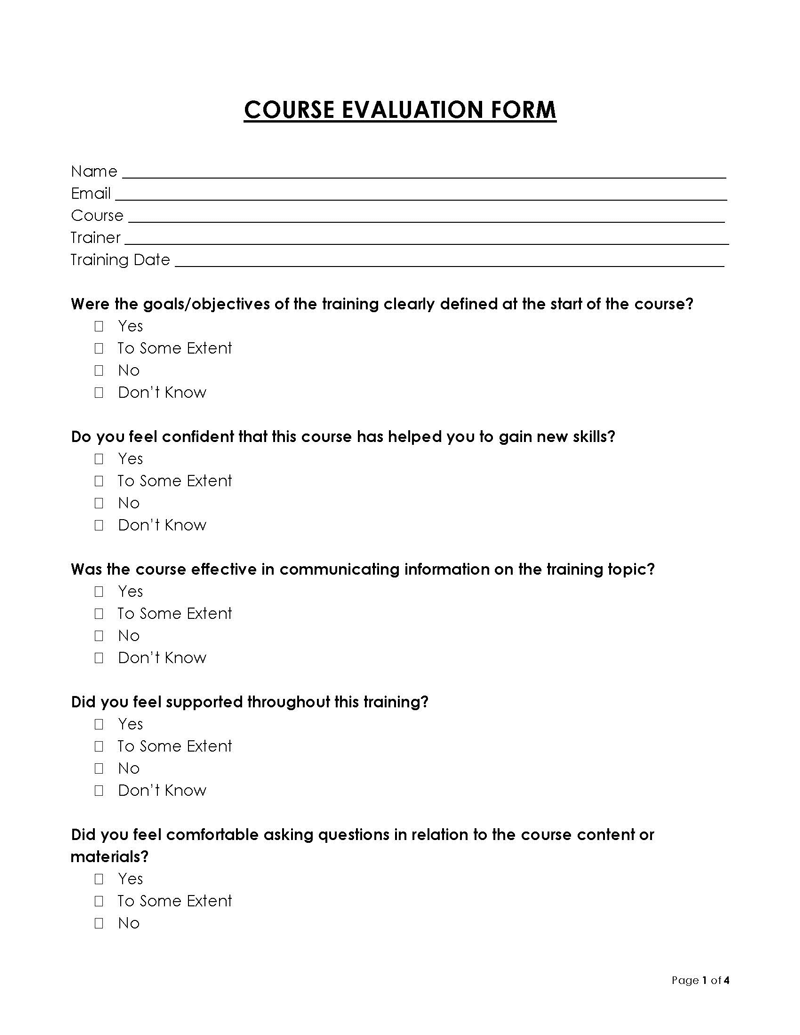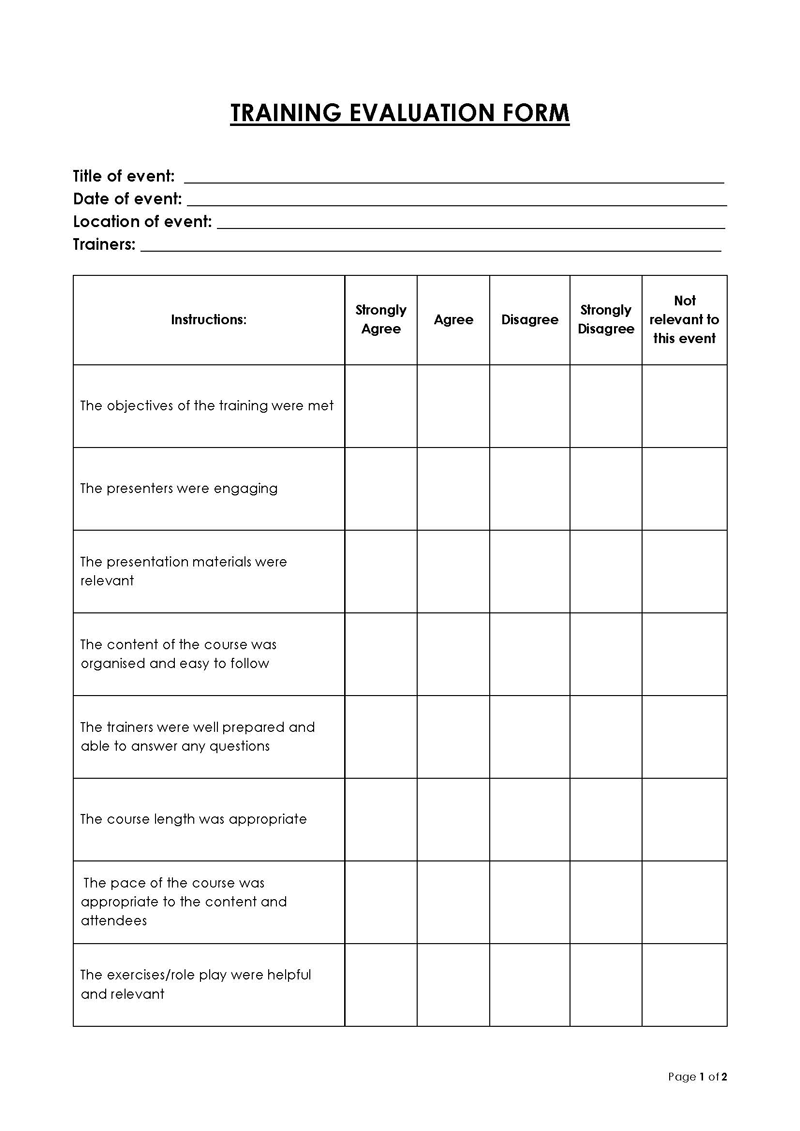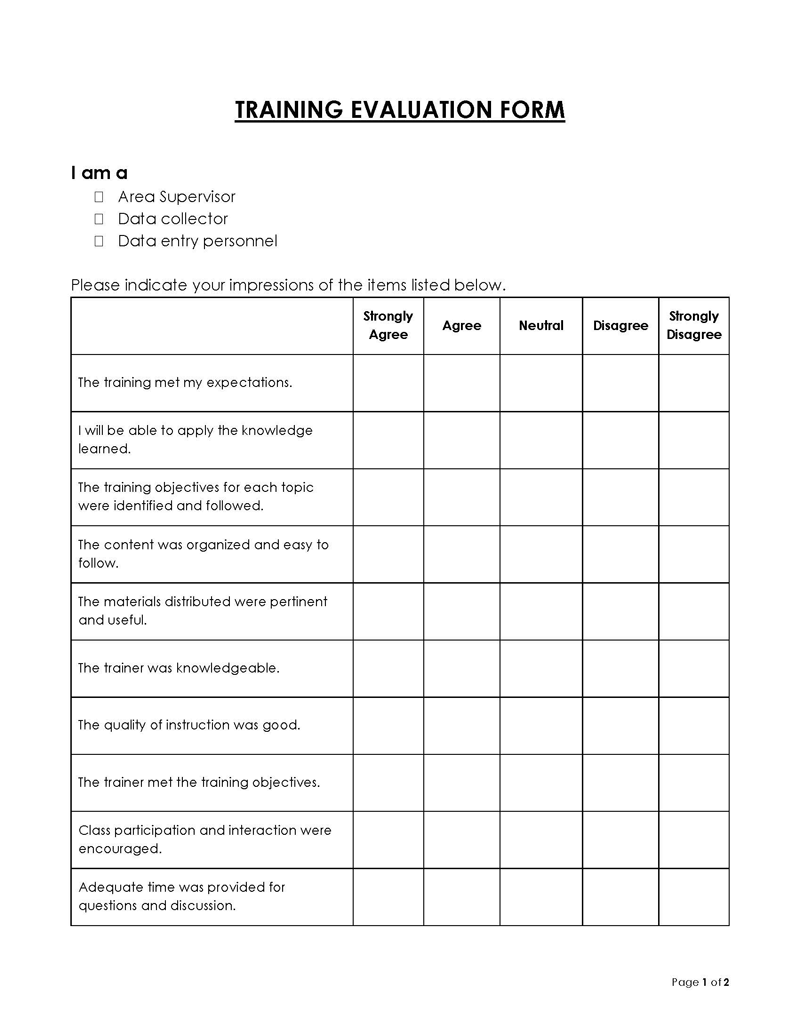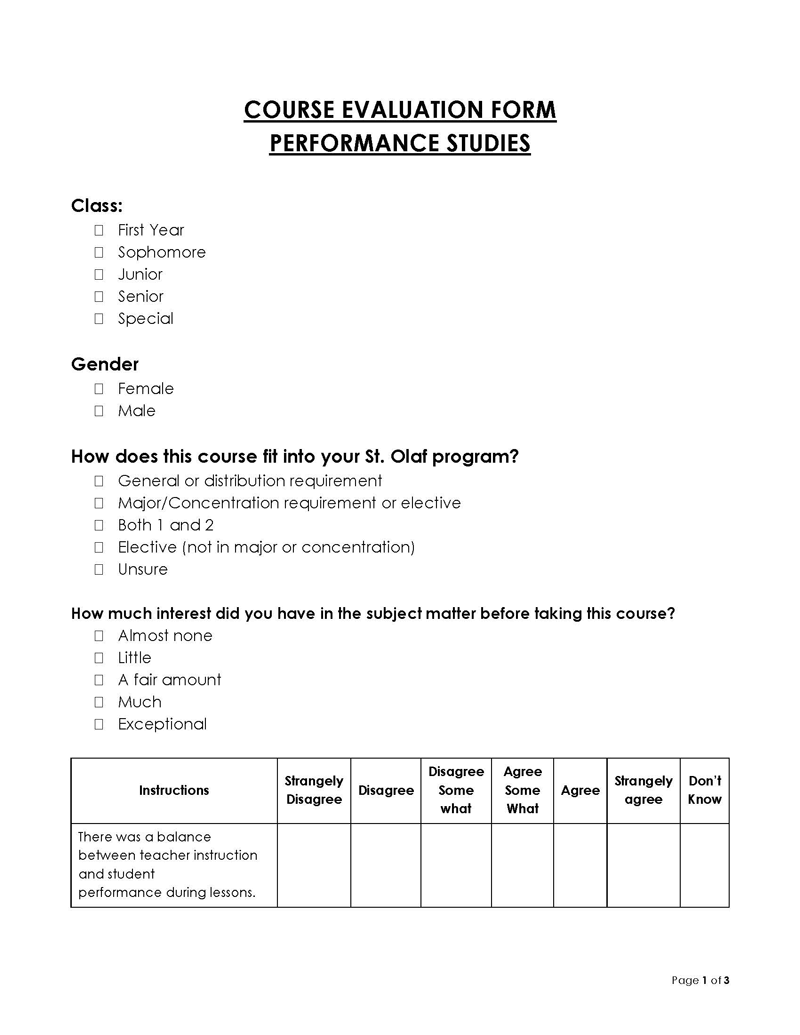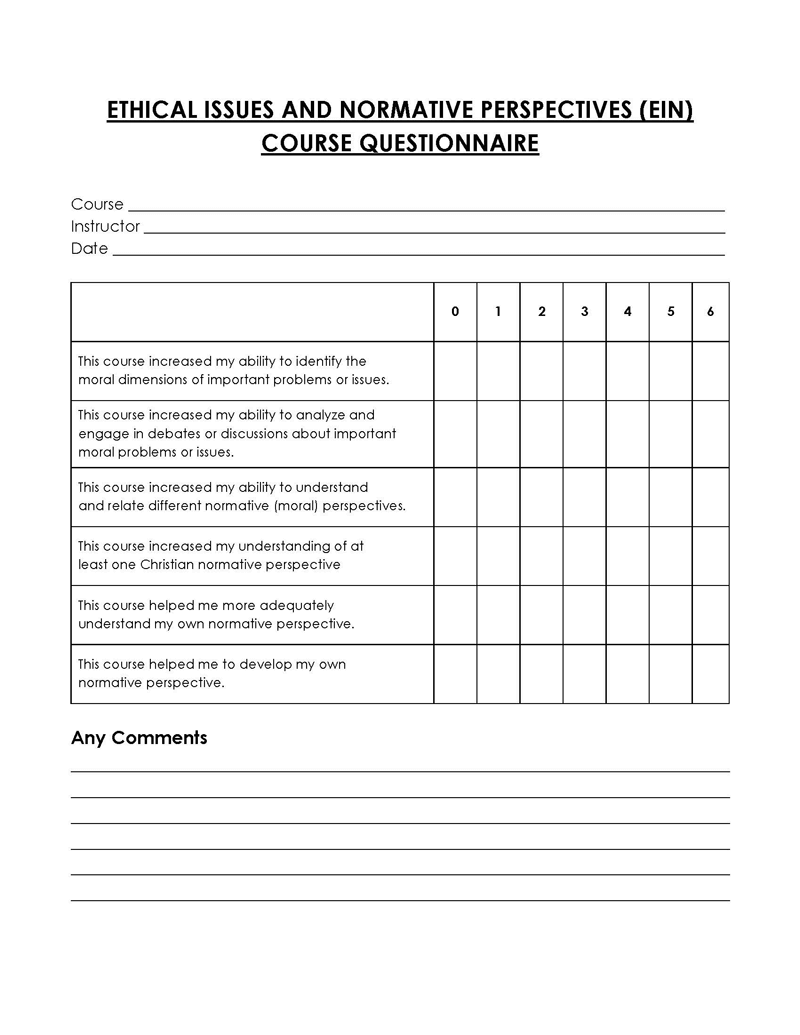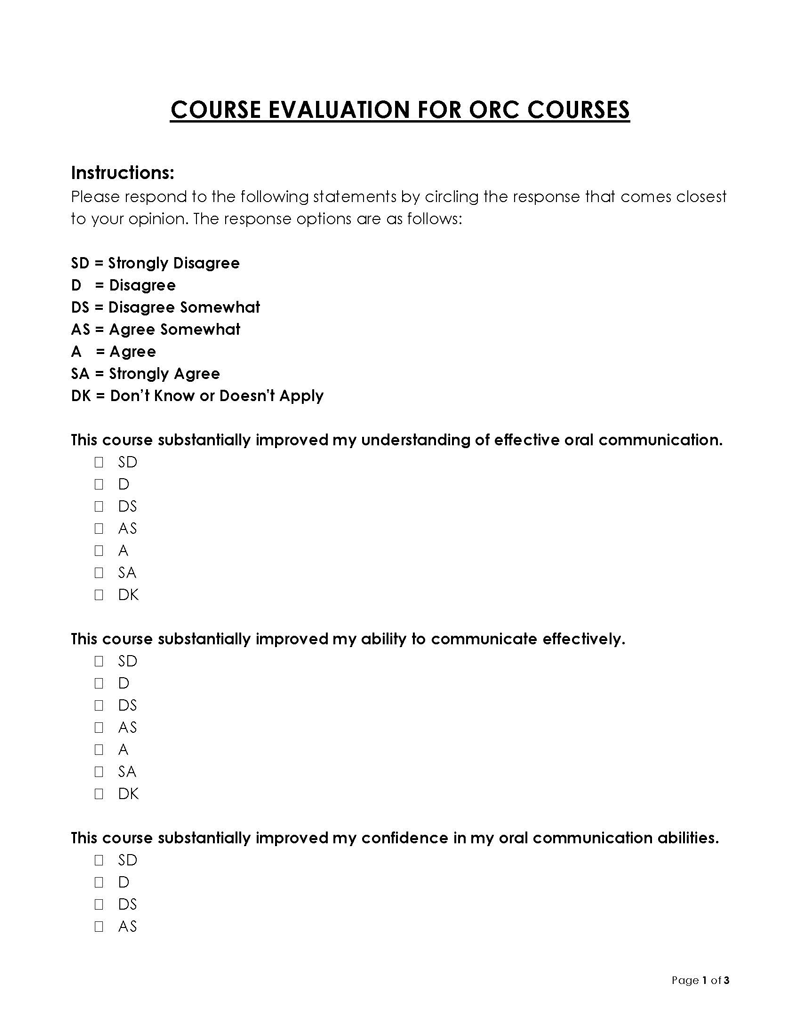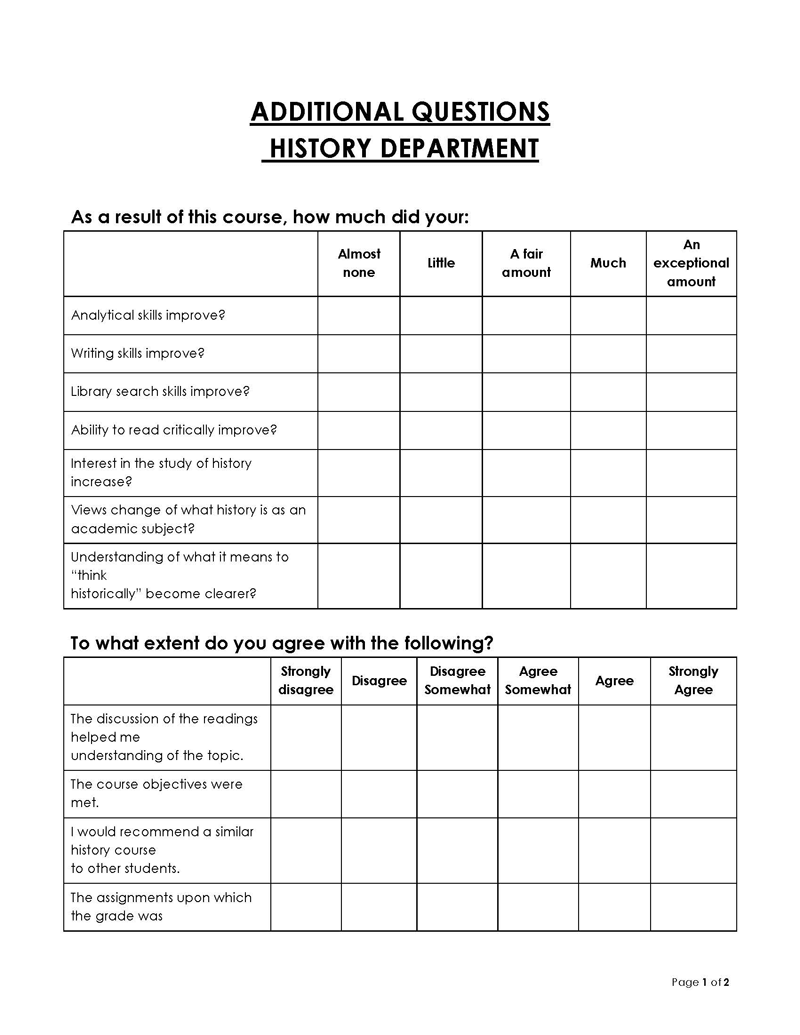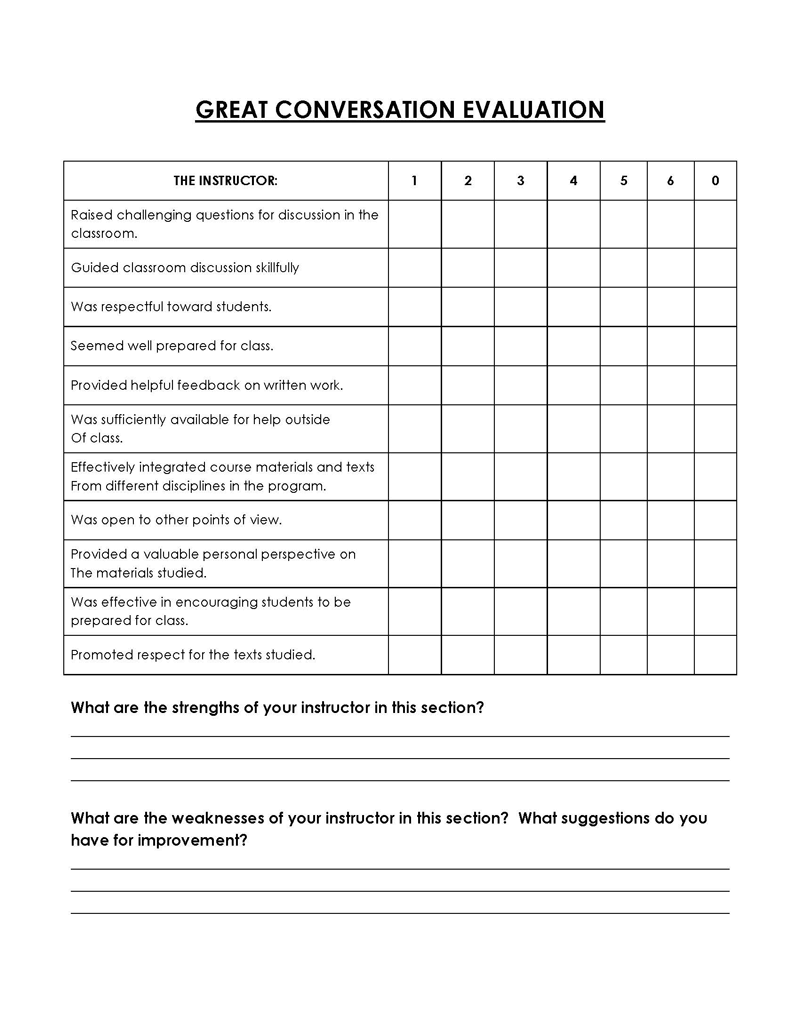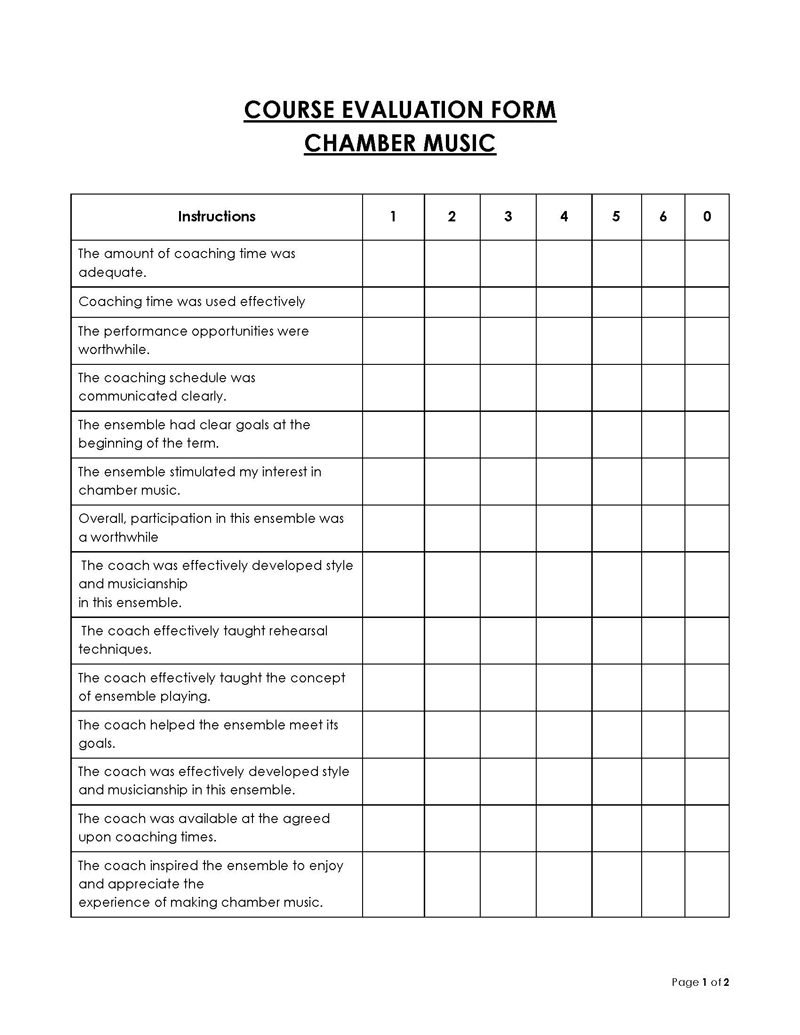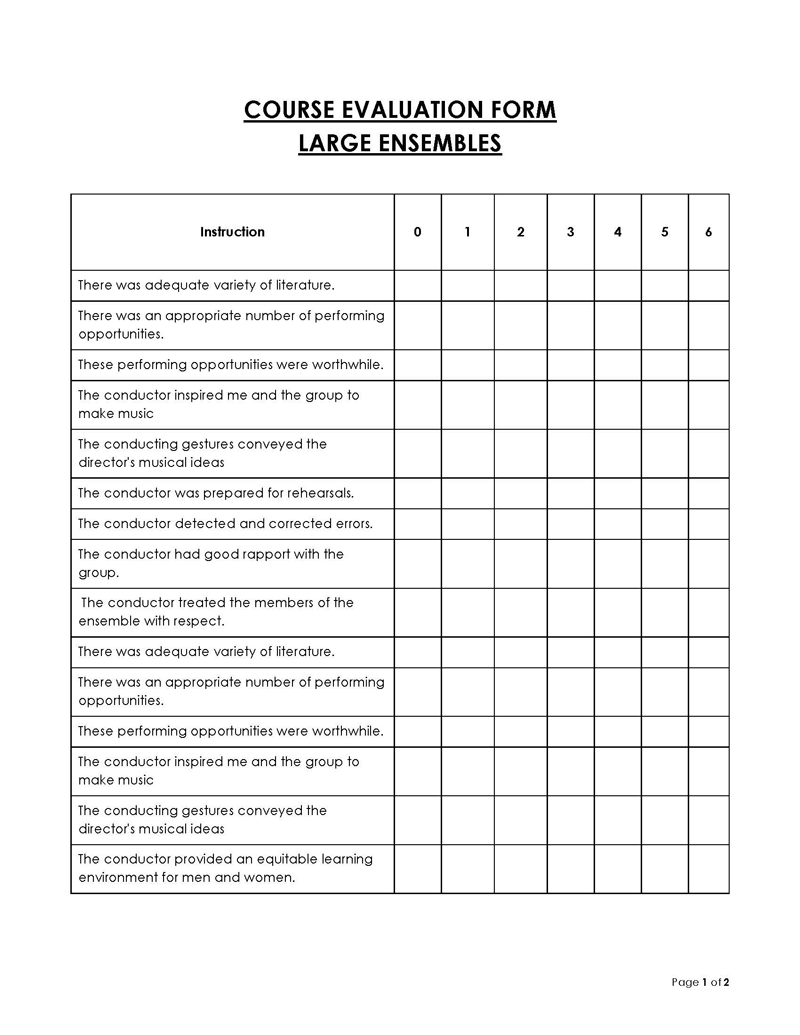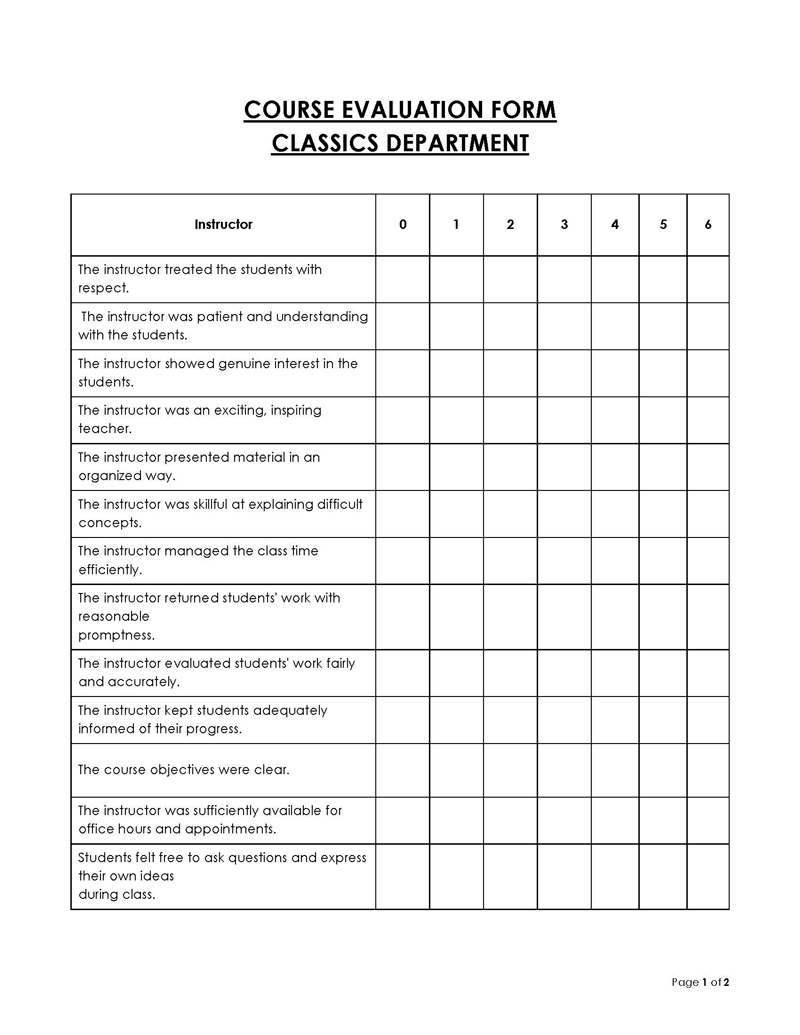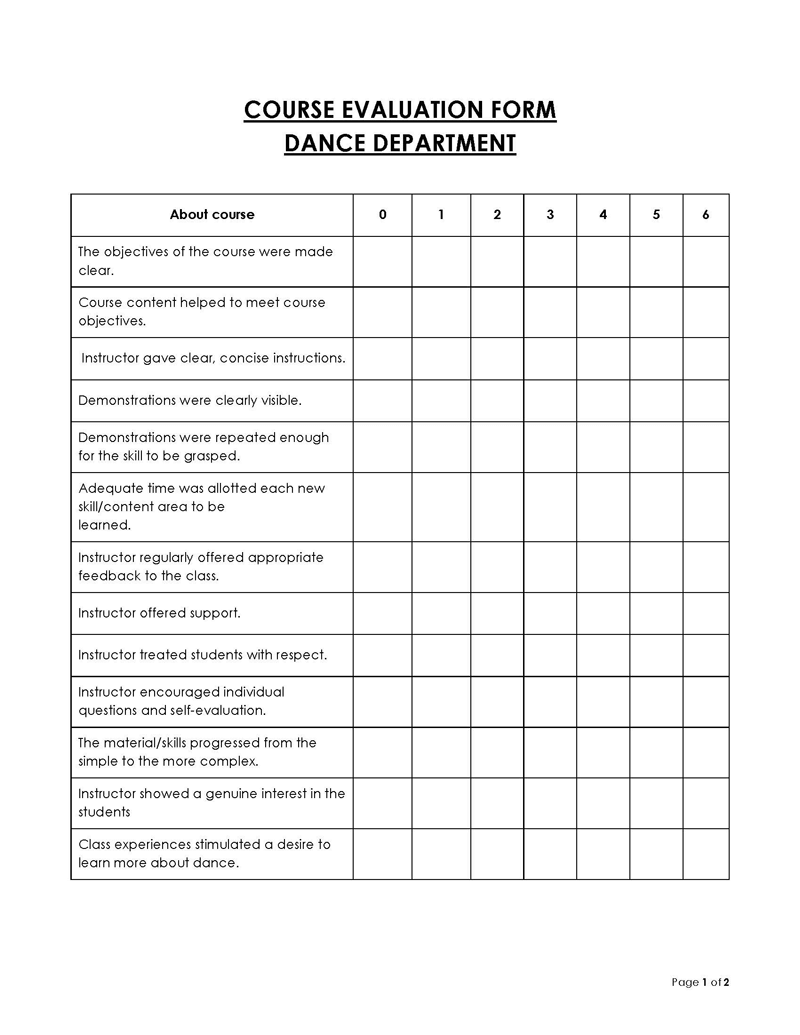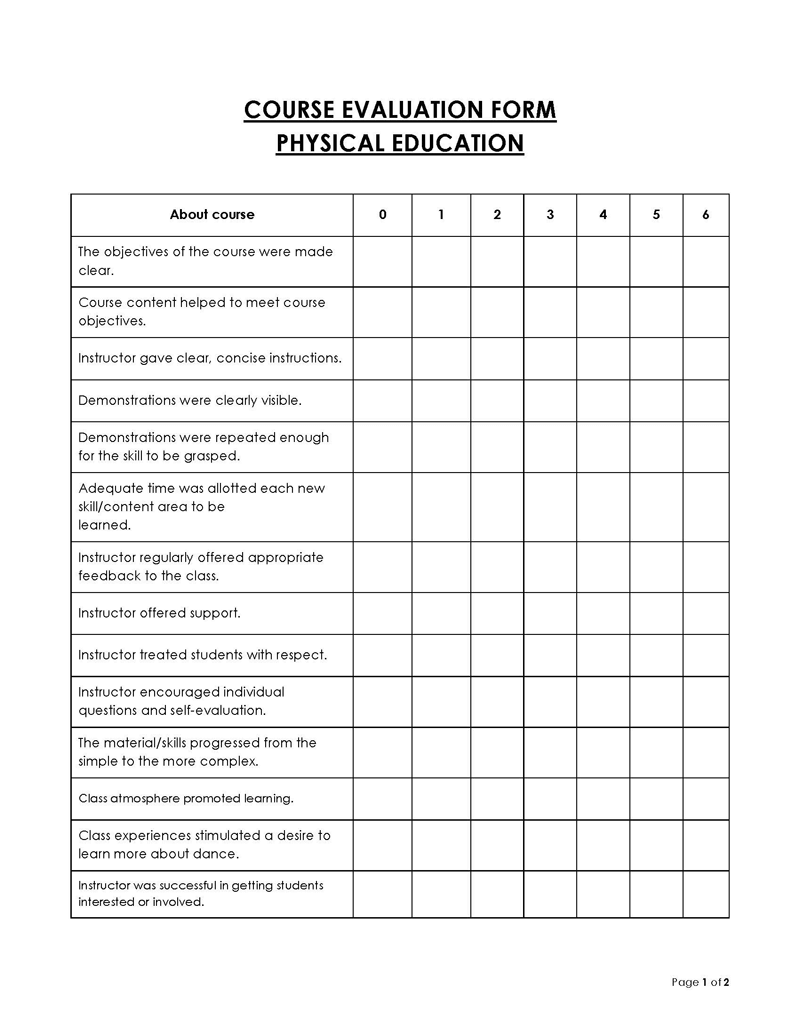Course evaluation is an analysis conducted by an educator, such as a teacher, to determine and understand the student’s learning experience. This evaluation is commonly conducted at the end of a class session, term, or academic year. The essence of the evaluation is to help teachers understand what their students think about their educational experience. This is crucial as it allows you to embrace and use new and effective teaching techniques to ensure your students have a better learning experience.
In most cases, this evaluation is conducted using course evaluation forms. This is a document used to collect feedback from students about their learning experiences. It is usually sent to course members and students. It helps you as a teacher understand how you can effectively and efficiently engage your students, improving their learning experience.
This article will teach you more about preparing a course evaluation form, why you should use it, and how to make it practical to gather accurate and helpful information.
Course Evaluation Form Templates
A course evaluation form should be precise, detailed, and accurate. Once prepared and shared, the evaluation form should help you gather relevant information that will make you a better teacher. Therefore, to make an effective and useful form, use a template. You can access such course evaluation form templates below.
Our templates are easy to use, can be customized to meet your requirements, and are free to download. They will save you time and effort when it comes to preparing the questions and sharing them with your students and relevant faculty members.
Why is it Important to Use the Course Evaluation Forms?
As a teacher, there are several benefits that a course evaluation provides for you, your students, and fellow staff. It is even more beneficial to use appropriate evaluation forms for the entire process to be successful.
Here is why you need to use the course evaluation forms:
Provide effective feedback
It is an excellent way to receive effective feedback from your students. That means you must consider the evaluation forms’ length, clarity, and discretion if you wish to receive proper and accurate feedback from the survey. You can make the necessary changes with effective feedback, such as adjusting your teaching methods or restructuring the course.
Build a culture of growth
You can quickly build a culture of growth among your students with course evaluation forms. A growth culture encourages you to focus on your student’s development and continual (frequent) progress. That way, you can make effective changes by identifying and correcting weaknesses, helping your students grow.
Provide actionable results
With an evaluation form that is concise and specific to the goals you want to achieve, you are more likely to get actionable results from the survey rather than general information. These forms will contain details that can produce tangible results among the students. You can read the data collected and implement it to facilitate learning progress.
Extract meaningful comments
Whether on paper or online, these surveys will likely extract meaningful comments from your students. The best way to achieve this is by using online course evaluation forms, having a limited number of questions, and including open-ended questions. This way, you will receive more extended and meaningful comments that will help you evaluate yourself and your students.
Offer accessibility
Course evaluation forms provide students with the ability to complete these surveys on their time. This is especially possible with the use of electronic surveys; this is because there is more accessibility and flexibility. With online forms, students can take their time to review the questions, think thoroughly about their answers, and avoid feeling pressured about their responses being early or late.
Encourage self-reflection
The use of evaluation forms allows both you and your students to self-reflect on your performance. This way, you will not only implement the changes or issues mentioned by your students but also allow your students to challenge themselves based on their own assessment from the survey. With self-reflection comes better performance and growth over time.
Reduce cost and environmental impact
When evaluating your students’ learning experience, it is best to use an online survey form and avoid using paper since it is environmentally friendly and less costly. With less printing, your students will become more environmentally conscious, and you will spend less on virtual evaluations. Also, your course evaluation forms will be properly saved or stored and easily retrievable for review.
Provide metrics for teacher evaluation
A course evaluation form can also be used as a long-term metric for teacher evaluation. The school administration can gauge your teaching success over the years using feedback in the forms. Also, they can use the data collected as a measure to track, compare, and assess the performance of new teachers or those still learning to become instructors. Although these forms are used alongside other types of evaluation, it is necessary to use and properly store your course evaluation forms.
Collect and assess information quickly
Evaluation forms allow you to collect and assess information, especially when using online course evaluation forms, easily and quickly. With a proper survey, you will easily gather responses that will facilitate quick decision-making and implementation. You will be able to sift through data, generate reports, compare feedback and organize the results to understand your students’ views on the course.
Raise student’s voice
Finally, using a course evaluation form to assess your student’s learning experience is a way of giving a voice to your students. Your students will realize that you value their feedback regarding their experience in the classroom. It will also help your students to seek help easily, share their educational experience and even raise any concerns they might have in the classroom.
How to Conduct a Course Evaluation?
The essence of conducting a course evaluation is to help you improve your output as a teacher. Therefore, getting feedback from the students and other faculty members is crucial as it helps you to determine the level of success you have attained in your teaching sessions.
Here are steps you can use when conducting a course evaluation:
Step 1: Identify the purpose
When conducting a course evaluation survey, it is important to have an objective that you are trying to accomplish. The purpose of the evaluation may include gathering information about the topics to cover on a given subject or searching for the most effective teaching techniques to use when teaching a particular class. The purpose of the course evaluation significantly influences the data you are trying to collect. You can identify your purpose by including the goal or objective at the top of your evaluation form.
To achieve this, you should prepare each question in your evaluation form in a way that targets your goal or objective. Each question should clearly communicate the goal you have for the course evaluation. With this in mind, you will have fewer questions with more value and meaning. That means you are more likely to gather effective feedback. Ensure that each question brings you closer to achieving the specific goal you have in mind.
Step 2: Outline the audience
The target audience depends on the information you intend to collect. Therefore, your target audience can range from students, other teachers, and the school management. Note that the purpose of your course evaluation will dictate who your target audience will be.
Therefore, your survey should be tailored to fit the intellectual capabilities of your target audience. Furthermore, your recipients should find it easy to understand and provide the appropriate feedback.
Step 3: Choose from various question formats
It is necessary to use more than one format when choosing questions for your course evaluation. Using different question formats and including a variety of questions in your evaluation makes it diverse and allows you to gather reliable and more accurate information. The variety and use of different formats cater to the needs of all students; for example, one student may prefer a rating scale, while another may prefer a detailed question that requires a lot of comments.
In addition, these styles prevent boredom and fatigue and ensure that your students remain engaged when responding to the questions.
Below are the various question formats you can choose from when preparing your evaluation form:
- In your course evaluation, you can use question formats like short responses. These are formats where the target audience provides answers to the available questions in not more than two sentences.
- You can also ask questions that are open-ended. These are questions that require the students or faculty members to provide broad and extended answers.
- Lastly, you can use rating scales in your evaluation. This format requires the recipient to use a scale usually from zero to ten or use options like agree or disagree to answer the available questions.
Step 4: Draft the questions
It is crucial to draft questions that will prompt the students to provide reliable answers. The questions should be in different formats and should be customized to complement your target audience. Note that the drafted questions should help you to collect appropriate and accurate data.
Furthermore, when drafting your questions, you can use a rank order, use multiple choice questions, provide a text entry box, use a slider question, or give a Likert scale option. Notably, the questions should be relevant to the course in question.
Step 5: Send out your course evaluation
It is important to send out your course evaluations at an appropriate time. The purpose of the evaluation is to help you get accurate and valuable feedback regarding the course you are teaching. Therefore, it is important to understand the schedule of your target audience before sending the evaluation forms.
Therefore, you can create several surveys that you will send at different times. One can be sent as the course progresses, while the other can be sent after the course has been completed.
Step 6: Analyze the data
After getting feedback, you should examine and analyze the data. The data analysis process will help you to note the progress made, identify any existing issues, and come up with appropriate solutions. Data analysis is crucial because it allows you to understand the needs of your students and improve your teaching practices.
Tip: A course evaluation survey should use detailed and specific questions; this allows you to get accurate and clear feedback that you can use to improve your tutoring techniques. Additionally, you can use specific and in-depth questions when evaluating a general topic or course.
Effective Practices to Pay Attention
When preparing a course evaluation form to share with your students, there are some effective tips you should consider to help you successfully achieve your goals.
Here are some of those practices or tips that you should pay attention to when it comes to evaluation forms:
Go digital
It is advisable to use digital course evaluation forms instead of printing them as they are more convenient and flexible. It is easier to receive and analyze your students’ responses while providing them with enough time and comfort to fill in the forms. You are more guaranteed to receive quality feedback if you go digital rather than using paper.
Set reminders
Ensure that you set reminders for your students to notify them in advance about any upcoming evaluations. This means that your students will be ready and well-prepared to partake in the survey. Also, you are more likely to receive the responses in a timely manner.
Use real-time feedback
Instead of having a set evaluation period for your survey, use a pulse-based approach. This approach allows you to monitor the evaluation process continually and use real-time feedback to improve the students’ learning experience. In the long run, you will be able to easily implement the necessary changes to suit the needs of your learners.
Evaluate on a granular level
Avoid course evaluations on a whole level and instead evaluate on a granular level. This involves breaking down the survey into class, department, teacher, and course levels. That means that you will receive detailed feedback about all aspects of your teaching, the classroom, and your students. This will enable you to easily identify the issues and improve your students’ learning experience.
Make it brief
Your students are busy individuals who might be juggling various activities at once. That means it is beneficial to make your course evaluation form short and straight to the point. Find a way to make it brief without compromising any information. With a brief document, you are more likely to receive genuine responses. This is because the document will require less time to complete.
Ask direct questions
Use direct questions if you want to receive proper responses. Ensure that each question focuses on one particular goal of the evaluation. That way, you will be able to collect data that is related to what you want to achieve. With direct and clear questions, there is easier interpretation with no vagueness.
Be clear
Even with a short evaluation form, you still need to ensure that the information you include is clear. General questions, technical details, or ambiguous information will make it hard for students to understand. This means that you might reduce your chances of getting accurate responses. Make sure that you are clear by using simple, straightforward, and short questions that are engaging and easy to understand.
Strive for student’s readability
While designing your course evaluation form, strive for a design that guarantees students’ readability. Avoid long and overly packed paragraphs that will make it hard for students to read and understand. To guarantee readability, ensure that you provide your students with a clear outline, detailed directions, and simple questions. With clear questions, your students will provide more meaningful answers for analysis.
Note: You can randomly choose a small group of students whom you will ask about the questions’ clarity. This ensures that the evaluation form has proper readability before you distribute it to the respondents. Another way you can strive for readability is by asking the participants to leave a comment about the clarity of the questions.
Limit the number of questions
Ensure that you try and limit the number of questions in your form. Too few questions will limit the data collected, while too many questions will negatively affect the quality of the collected data. Try and categorize your evaluation form and then limit the questions to each category. Also, make sure that you inform the students of the expected number of questions at the top part of the form.
Use standardized questions
You should not only limit your questions but also standardize them to fit the different programs and departments. This way, you can use the same questions to evaluate your students and successfully collect data that will help you establish a trend or pattern. Also, with standardized questions, there is more flexibility, practicality, and quality feedback.
Emphasize confidentiality
Finally, always prioritize confidentiality and anonymity. Your students will be more open, truthful, and confident if you keep the course evaluation forms anonymous. An effective survey is one that helps you collect actual data, and guaranteeing confidentiality will enable you to achieve that. Use online evaluations since they are usually more anonymous and appealing to students.
Wrapping Up
A course evaluation is an effective and efficient way of determining the progress made by the students, gauging your teaching methods, and your ability to offer an outstanding education. That means, with constant evaluation, you will be able to improve the learning experience of your students and become a better tutor in the process. Therefore, you need a course evaluation form that will continually examine your ability and skills as a teacher.
Furthermore, course evaluations allow you to identify any existing problems and develop suitable solutions. The school executives can use your evaluation forms to examine the existing learning environment, the courses being taught, and your ability to help the students develop academically. This way, necessary changes, and improvements can be made for the benefit of the students.
